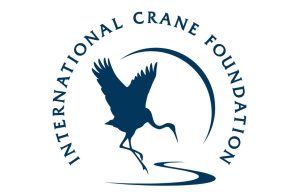A new survey indicates that Eurasian Goldfinches in England are up 78% over the ten-year average, an increase attributed to people using a new mix of birdseed, one that includes nyger. Forgive this American birder his skepticism, but I bet that the number of birds remained roughly level but they just came to feeders and were counted more often. I just don’t think that a new birdseed could have that dramatic an impact on any bird population in so short a time. Any British birders want to weigh in on this?
Recent Posts
 Springtime in the RGVBy Hannah
Springtime in the RGVBy Hannah Bramblings, Bustards and Choughs: Enjoying Big Flocks in GeorgiaBy a Guest
Bramblings, Bustards and Choughs: Enjoying Big Flocks in GeorgiaBy a Guest Bird Guides of the World: Johnnier Arango, ColombiaBy Editor
Bird Guides of the World: Johnnier Arango, ColombiaBy Editor Some Pigeons of Sulawesi and HalmaheraBy Kai Pflug
Some Pigeons of Sulawesi and HalmaheraBy Kai Pflug Birding Lodges of the World: Guango Lodge, EcuadorBy Editor
Birding Lodges of the World: Guango Lodge, EcuadorBy Editor Falls of Migrants in the Strait of GibraltarBy Clive Finlayson
Falls of Migrants in the Strait of GibraltarBy Clive Finlayson Three Photos: Mythical BirdsBy Editor
Three Photos: Mythical BirdsBy Editor
Welcome to 10,000 Birds!
Learn about our site and writers, advertise, subscribe, or contact us. New writers welcome – details here!
Posting Calendar
| DAY | WRITER(S) | SERIES |
|---|---|---|
| MON | Kai (w) | Birding Lodges (w) |
| TUE | Donna (m) Susan (m) Hannah (m) Fitzroy (m) | Bird Guides (w) |
| WED | Leslie (bw) Faraaz (bw) | Ask a Birder (w) |
| THU | Paul (w) | Birder’s Lists (w) |
| FRI | David (w) | Species Spotlight (w) |
| SAT | Peter (bw) Luca (bw) | From the Archives (w) |
| SUN | Clive (w) Valters (bw) | Three Photos (w) |
| w weekly, bw biweekly, m monthly | ||
| Any time: Jason, Mark, John, Sara, Rolf, Dragan | ||
See here for info on the writers.
Newsletter
Signup and receive notice of new posts!
Thank you!
You have successfully joined our subscriber list.











Not a British birder but I can definitely imagine a better seed mix boosting winter survival by 5% each year, resulting in 5% more young each year (or more if the birds benefit from the seed in the breeding season). Over ten years that little increase in survival really adds up.
I have no idea whether it’s because of the niger seed, but I certainly have been thinking recently that there are a lot of goldfinches around. I seem to hear them everywhere, including central London. They could just be spreading into London more from the countryside, of course, but I can believe the population is up significantly.
And it’s not because they’re coming to my feeders more, because I put out niger seed for them specially and they hardly ever come to it.
I also think it is a genuine increase that is not restricted to Britain. Before I left Baden-Württemberg in the SW of Germany in 1996, Goldfinches weren’t precisely rare but one would take note of every observation, and they were not granted during an ordinary day’s birding unless a territory was known.
Now, in 2010 after returning to roughly the same area (just 2 hours to the North), they are downright common even within the cities and amongst the most common birds to find right after Greenfinches and Serins (yeah, Serins, for UK visitors reading this, darn nice birds 😉 ).
So possibly it was the seeds, although I doubt that would be a major factor in Germany as we don’t feed birds that much in winter. Whatever it was, thanks you – good job!
I’m across the pond in Blighty and i’ll be honest…am 34 now and when I was around 8 I started Bird watching with my dad, we NEVER saw any Goldfinches around our area and nowadays 26 years on they are rife!!! Everywhere local I hear and see Goldfinches, it maybe the seed, it may not but they seem to have gone up in numbers ALOT!!!
Personally I am a great fan of blaming the f-f-fantastic EU.
Goldfinches and Wood Pigeons fly sky high – most lowland insectivores fall way down.
The common agriculural policy (CAP) has really helped corporate profits and taken working people out of the countryside. In so doing it has encouraged ‘nitrate & neglect’ to run riot across the land.
This fact together with “the lazy way we live nowadays in Europe” means that there is A LOT more land supporting those tall ‘parachute-seeding’ plants (chiefly Asteraceae) which are the preferred food for Goldfinches. Just travel around in Spain, Portugal, France, the UK – everywhere.
Window-birder feeding stations and ‘long runs’ of milder winters must have helped (it’s that old chestnut climate change yet again!).
And fundamentally – our birds and birding well that’s a political reality – like it or not.
We get the birds we deserve: recall the Magpie mayhem? Now it’s Golden finches and Fat Field Pigeons (both of whom nest in dense overgrown thickets or unkempt plantations and all along those highway verges).
To emphasise the EU/CAP (in all its guises) point – this just came in from Birdguides:
“The plight of the Bluethroat as a spring visitor to almost anywhere bar Shetland is highlighted beautifully by Norfolk itself. Once, the species (in its red-spotted guise) was a staple of county birding in May. But take a look at the books. Over the past 10 years, it’s six Red-spotted to four White-spotted; a rather depressing statistic bearing in mind that only half a generation ago you could have seen six Red-spots in a day around Norfolk.”
Since the 1990s most of ‘inner’ Eastern Europe has acceded to the EU and the CAP; Russia of course has not and Norway never wanted membership.
Norfolk’s 1980s Bluethroats arrived on southeasterlies and were probably ‘southern birds’; by contrast Shetland’s overshooting birds come from breeding areas much farther north: in Norway and Russia.